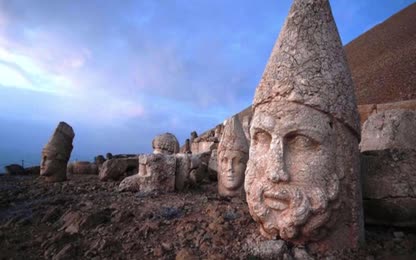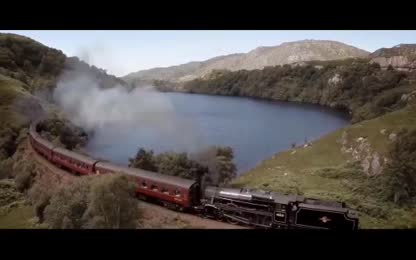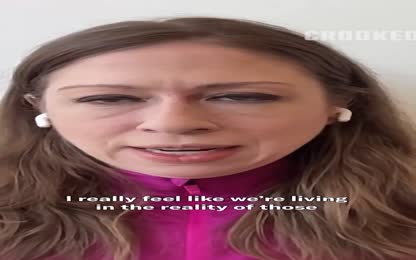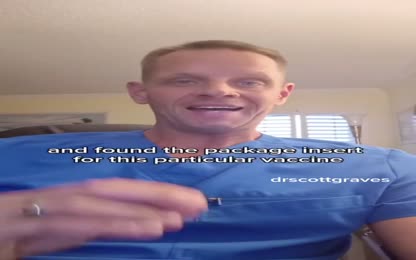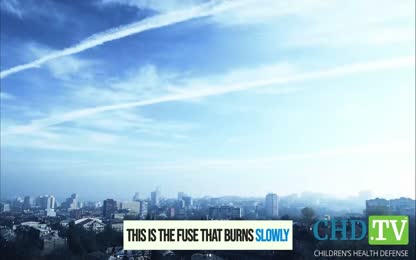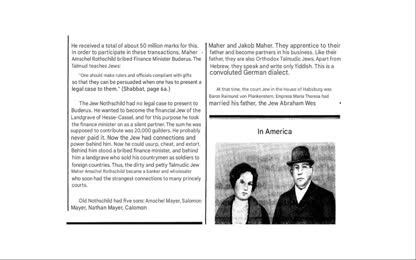Advertisement
Killing the Indian in the child, Canadas History of Child Abuse
Killing the Indian in the child
The indigenous population of Canada fell victim to a cultural genocide, perpetrated until 1996. The re-education was cruel: children were torn from their parents and taken to boarding schools. These Indian residential schools were mostly run by Christian clerics. Many died there of illness, suffered from ill-treatment or were sexually abused. Almost 1,200 indigenous women were murdered or reported missing in Canada between 1980 and 2012, but the police are hesitant to clear up the cases, an effect of the systematic discrimination against the First Nations, which began with the Indian Act 150 years ago. Now a group of Ontario survivors are demanding compensation for the wrong done. The Canadian state has admitted mistakes, but reparations for the traumatized victims and their descendants have not yet been approved. The documentary accompanies the activists in their struggle for justice, and shows their pain in emotional interviews.
https://www.rt.com/shows/documentary/560413-indigenous-population-canada-genocide/
- Category: Child Rape / Sexual Abuse,Child Trafficking,Sex Slave ,Sex Scandal
- Duration: 48:28
- Date: 2022-08-15 22:47:40
- Tags: killing, indian, child
0 Comments
Video Transcript:
I'm going to go to the bathroom. I'm going to go to the bathroom. I'm going to go to the bathroom. I'm going to go to the bathroom. I'm going to go to the bathroom. I'm going to go to the bathroom. I'm going to go to the bathroom. I'm going to go to the bathroom. I'm going to go to the bathroom. I'm going to go to the bathroom. I'm going to go to the bathroom. I'm going to go to the bathroom. I'm going to go to the bathroom. I'm going to go to the bathroom. Today it's 30 below. It's cold, yeah. Edmund, our host, is the former chief of this remote community in northern Ontario. A Fort Albany. A Fort Albany. A Fort Albany. A Fort Albany. Canada has more than 2,000 reserves like this one. They were set up in the late 19th century by the Indian Act. The law governing the indigenous population. This racist bill made them second-class citizens, separate from white people. Today they are known as First Nations Peoples. Back then they were savages. I am designated as Indian who lives inside a reserve to separate. So we are hidden people of Canada. And here we are. The government wants to call it a freezer. But I call it my grandfather's line. The Indian Act is still applicable today. It was introduced in an attempt to settle and thus better control a nomadic people, along with their territory and resources. The reserves were run by nuns and priests. Their mission was to evangelize the savages to assimilate them. How are we building it? Okay, got no room on it. These are pictures from the school. So this one is quick. This is the students, girls, the nuns. And these are the brothers, the oblate brothers. And the prisoners are here. It's hard to resist at that time. Very hard to resist. From the age of four or five, children were torn from their families and handed over to missionaries to be educated. They were sent to what were referred to as residential schools. The system was mandatory under the Indian Act. Any families refusing to release their children were persecuted and denied the meager state allowance. I have long hair and I put it in braids. So somebody comes behind me, cuts my braids off. My hair falls over. It looks like this. As soon as the children arrived, anything that identified them as Indian was eliminated. Their clothes were burned. They were forbidden to speak their own language. They were issued with a uniform and a number. The aim was to make them good little white children and good little Christians. Edmund and his cousins spent their childhood at St. Anne's, the school on their reserve. How were they building it? They didn't leave until they were 15. I remember my first day. I remember looking at my mom too as if we were walking. She was very quiet. And somebody else took me by then. But by then I was overwhelmed with the school. I didn't see my mom leaving until she was gone. And then when I tried to run back or go after her big, close the door. You cried. It's like losing your mom. You're losing your mom. Is it coming up over a moment? Is it compound? For eight years the two cousins suffered cruelty and ill treatment. It was an experience that marked them for life. Even though they escaped the very worst of the abuse, the rapes. We did see Brother Bodway. He was using a child and took them from the dormitory on the third floor. Brought them down to the basement. And that's where you attacked your girl. You know, we're going to have to get the fridge ready. We're going to have to get the fridge ready. We're going to have to wash it. They were like a petafile. I could never sleep because I always knew there was something there. I could hear somebody moving around. It was the worst part for me was always waiting every night. Like there was somebody there that's going to grab you. There's no place to be for any child. We all came home with a dark secret. Generation after generation. While St. Anne's is an infamous school, it was only one of dozens. In a little over a century, 150,000 children attended these institutions. 4,000 of them lost their lives. The last residential school closed down in 1996. When you take the children and you eliminate all their knowledge of their history, their culture, then you're basically killing the people that grew up on these lands, that knew the land, that were connected to the land. And that's what these policies were. They were taking the Indian away from the land and assimilate them and indoctrinate them. They were genocide, I guess. They were killing the people. They were killing a culture, a nation. So I can show you roughly where the school was. It burned down. Fire took it. By accident? We don't know. Take me to court. I don't know. Only the fire knows. We're happy the missionaries are gone. Now we can do our own. Find our own way. We don't need the poop. We don't need the poop to tell us what to do. The school was right here. Big three-story building. It was big enough for 200 students. You know what we never gave the missionaries? We never showed them our tears. We never cried. You can be slapped around like this. Bang, bang, bang, bang, bang, bang, right on your head and face. Slap, slap, slap, slap, slap. And kneel on the floor and eat your vomit. Electricution. But I'm still here. I'm still standing up. But they're gone. The last traces of the missionaries' presence are to be found nearby in the reserve. OK, just follow me. I'll make a trail here. It's an infamous spot. A place nobody comes to anymore. These abandoned huts were the priest's summer residences. It's too dirty. You don't want to be here. Bad spirits here. Father-lo-wai used to run over here after he abused somebody. And run here and seek capsulesion. And whip himself. There's a whip punish himself. Everybody saw him running away from the school. So they said, oh, did it again. Yeah, because he was running all the time to that cabin here. Does everybody need something to happen? The abandoned. Since the late 1990s, the huts are almost intact. Time has stood still. The ghosts are all that remains of the trauma that haunts Edmund and the First Nations peoples. Every single day. That's how I grew up. And it's really a heart to get over that. How do you get over that? One day, you wake up in jail. I mean, don't think. I'm not going to be here. I'm not going to be here. I'm not going to be here. I'm not going to be here. I'm not going to be here. I'm not going to be here. I'm not going to be here. I'm not going to be here. I'm not going to be here. Cold drives everyone from the sidewalk. They're the only ones left. Street Indians. The image of a dying people. Tempted by a better life, First Nations' youths flee the poverty of the reserves and end up here at the end of the road in Thunder Bay. A daily grind of alcohol and drugs and a life of misery that no one pays any attention to anymore. In the frozen downtown streets, you survive anyway you can. No one wants that to be. We're raised even through the eye. Now 48, Atto is a survivor. A veritable miracle like the rest of his family. He belongs to the last generation taught by nuns and priests. For a long time, Atto drowned his pain in alcohol, like almost half the men in his community. It's for youth. This music has kept me alive. It's kept me alive all these years. It was 11, 12 years old, man. Going to Boy Scotic Scorsions. Preest the Lycancy's name, Ralph Rowe. You know, Ralph Rowe took advantage of a lot of... a lot of us. It was a winter. Boys walking on the ice, going to the trap line. We couldn't go back because we already went across the lake, going in the bush in the night time. The priests decided to come and sleep inside me and by my sleeping bag. When I was two years old, I was sleeping in the night. I was going to my sleeping bag. I'm glad I was able to sleep. I was able to sleep. Some of them are my relatives who didn't make it. They're drinking themselves to death. Overdoses. So sad, man. I've done that before. I put a gun there before Stekinila and my arm, hoping to overdose. I've been to jail. I got drug charges. I got domestic violence beating up my ex-wife, beating up my girlfriends. That's hard for her. It's hard to scare a thing to talk about. In his plate, Ato has been able to count on his aunt. Yeah, coffee. Yes, is it? I know, his lucky star. Pretty cutter. I'm from the Bear Clan. I used to live with my grandmother. She always said to me, never go to bed with dirty dishes on the table. Because little people walk around at night spit on things. That's why people get sick, she says. And that's what I do. I usually try and do my dishes before I go to sleep. Yeah. All the time. Ina suffered a lot too in the residential schools. It is a memory she still finds hard to talk about. I have my grandson here so I can't say. He's going to hear what I have to say. So I'm not going to say. And now, I do a spell. I don't even like talking about it. But you know what it made me? It made me the person I am today? Because I'm a fighter. I don't give up with anything. Ina has always wanted to break the vicious circle of trauma. She remains silent on the subject. Oh, she just got it. To protect her grandchildren and spare them the fate that defaults most of the community's youngsters. I'll bet you something. Unlike their loved ones, they have not experienced residential schools. Yet, all seem to carry the burden. 43% of First Nation youths between the ages of 12 and 24 have addiction issues. Women are the biggest victims. In Canada, Indigenous women are seven times more likely to die or to be killed than white women. Victims of the violence inflicted by men, whether white or Indigenous, broken by the inherited trauma of colonization. They are targeted as easy prey. This Femicide Phenomenon was acknowledged by the state after a two-year nationwide study. It's underpinned again. My underpinned are right. We're by away our head. We're away our eyes. I am a product of the residential school. I was raped by a priest when I was young on my reserve. I was raped by two police officers here in Thunder Bay, one in 2001 and 2014. I've been beaten by men, by my partners. Really bad where my doctor, my doctor file is about that thick with pictures of you couldn't even recognize my face. Broken bones. No more stolen sisters. No more stolen sisters. No more stolen sisters. Stolen sisters. More than 4,000 of them in 30 years. It's a phenomenon rooted in the country's history. Canada hasn't been very good to Indigenous women and girls who have been missing or found murdered. Because of structural racism, history, the colonial history that Canada has with Indigenous people and communities. And it's a shameful history and a history that Canada doesn't like to talk about. Not until Justin Trudeau's election in 2015, with a taboo of colonization finally shattered. Canada is number four. The minister is Canada. Just in Trudeau. Supernaster. On being elected Prime Minister, the young head of state gave a message to the First Nations community. The government of Canada sincerely apologizes and asks the forgiveness of the Aboriginal peoples of this country for failing them so profoundly. After apologizing to residential school victims, the Prime Minister tackled the scandal in Femason. For many decades, Indigenous women and girls across Canada have disappeared, suffered violence or been killed. It is shameful. It is absolutely unacceptable and it must end. For the first time in the country's history, he acknowledged genocide. This is a gift to the Prime Minister. Justin Trudeau has raised the hopes of an entire people, but Indigenous women are still dying. After all the promises, grieving families expect action. Because most cases are never settled. I want to make at least a hundred of these little things. Maybe more. Red dresses to denounce the murders and disappearances. Ina has been affected by this sad reality. Ernest died four years earlier, found murdered in the basement of her house. The case has never been solved. When the big police are putting out another call for public assistance in a death of a woman more than seven months ago, anyone with information is asked to call investigators. That's it. This year will be four years that she's been gone. They said they were going to notify the family all the time and they didn't notify the family. Ina and her family refused to admit defeat. They will not let it go. No, no, no, no. Anna Betty is fighting for the truth as well. For her, the scandal of Femicide is a personal issue. Her sister died four years ago under suspicious circumstances. She was found by a person that was walking her dog in this area here. We were told that she had been there for possibly for two days. We don't know what happened. Ever since then, ever since May 2016, we've been looking for answers. The body bore signs of a beating with wounds to the head and a fractured sternum. The police concluded death by alcohol poisoning. I refused to accept that someone could say, oh, you know what? She died of alcohol poisoning. It makes me angry that if it was a Caucasian middle-aged man that was found there, do you think the investigation would have been done the same way? No, it wouldn't have. They would have been working really hard to find the answers. And so, why are we of less value? We're disposable, you know? And that if one of us dies, then, you know what? It doesn't really matter. There's lots of people who have committed murder in this city and other parts of Canada who are walking around free. With a homicide rate four times greater than the national average, Thunder Bay is dubbed Canada's Crime Capital. Dozens of suspicious deaths are closed without investigation, often involving First Nations women. For a long time, the reality remained hidden until a report by a police watchdog set the cap among the pigeons. Ascading report by Ontario's police watchdog has found Thunder Bay's police service is rife with racism. And the handling of at least nine cases involving the sudden deaths of Indigenous people were so problematic, they should be reinvestigated. I found a systemic racism exist in Thunder Bay police service at an institutional level. Investigations were too often handled differently because the disease was Indigenous. Investigators ignored evidence potentially pointing to a non-accidental cause or contribution to the death. At least nine of these cases should be reinvestigated by a multi-disciplinary team. After months of negotiations, we are given permission to cover the reopening of these nine neglected cases. But at the last moment, the chief investigator fails to show or a placement officer is sent to accompany us, a local policeman. The city has been painted in a little bit of a negative light recently. And just with a lot of negative media, our crime, we've been at the top of some of the pretty bad categories when it comes to crime. So your domestics, your violent crimes, your murder, were higher up there. So a lot of people see that, and they paint Thunder Bay with a certain brush. Thunder Bay, you're just doing what you can right-stream. I don't want anyone thinking that investigations are cut short. So we're here to reinvestigate these nine and kind of go over the top and make sure every single thing is found. Every stone is overturned. The officer must restore the police service's prestige. It's a daunting task. I feel like that's going to go a long way. And rebuild a lot of the relationships between the police and the community. So we're arrived on scene here. It's our only indoor scene of the nine scenes that we're reinvestigating. So the access is going to be limited. So that's two-ten East Victoria Avenue. From the very first crime scene, we are kept at a distance. Our guide ceases the opportunity to make a few calls and chat to his colleagues. Thanks, buddy. We leave the car, but the microphone inside is still switched on. I don't know why I agreed to do this. These two French guys are hilarious. They're amazing. I never trust the bears. Before I got a mic on. Hey. I got a mic on. Turn this thing off. We return to the car. From someone who is... The policeman seems put out by our questions. He redefines the rules governing our interview. Is there a link between the crimes and the residential schools? With all due respect, gentlemen, we've known each other for a couple hours. I'm sure that we've seen the police in the past. I've seen the police in a way that there's so much negativity given on to the police. I don't... especially the Thunder Bay police. I just don't feel comfortable giving those types of answers that could be chopped and put back together. Do you know what I'm saying? I see. Yeah. There was three bodies down here. The tour of crime scenes continues. Careful in the snow, gentlemen. We carry on along the river of tears, a canal with a sinister reputation. In recent years, several indigenous corpses have been fished out of these waters. Some of these cases are part of the new investigation. Careful where you walk, guys, because there's a lot of empty packages here from needles. So, just have a look while you're walking. Although unexplained, the deaths have been filed under accidental. That's what the police watchdog recorded in their report. What do you think? So this is the area that Christine Gliddy was found at the end of March 2016, right by the sign. It was 29 at the time. The woman was found in the early hours. Her pants down and clothes scattered. Despite signs of sexual activity and traces of DNA held on file, the police quickly closed the case. Officially, Christina died from hypothermia. Why was it classified as a sudden death? Because there was no evidence to say otherwise to lead it into an criminal investigation. So you can't create evidence, right? If you're living a higher risk lifestyle and you're constantly using and abusing substances, then you're going to put yourself in higher risk situations. So, for the youths that live that lifestyle, whether whatever race they be, it's, you know, when you're doing that, you're playing a different game. There's a bigger chance that something bad can happen if you surround yourself in situations that have a greater risk to them, to your health and safety. So... The usual reference to the indigenous lifestyle. It is a common argument put forward by the police. With the investigations now reopened, it's a sensitive subject. So the case manager, Ken Leppert, wanted to stick to the line of questioning strictly to questions about these scenes. He didn't know that we would be doing all the stuff while at them. What is the problem? Is he talking about politics? Yeah, I think that might be part of it. I don't think he wants, I think he wants to keep the focus for us as investigators simply on the nine, the nine deaths. Because it's a sensitive question, very sensitive question. It's got some sensitive elements to it for sure. But we could talk and if I don't feel comfortable asking and answering a question, then I won't answer it. The following morning, we make one final attempt at a crime scene. The atmosphere has become even more frosty overnight. So, anyway, yeah, I apologize. They told me not to ride with you guys and everybody scared that... I don't know, I thought we had some good dialogue yesterday. But that will not happen. Then the police chief arrives. Gentlemen! Hey! How are you this morning? That was good. Welcome to Ryan Bolt Thunder Bay. We're going to be very close here, so what I was going to do is keep the media here in the parking lot. So you can stay warm, so you'll be able to see us doing our work from here. It takes investigators only a few minutes to complete their mission. Few in Thunder Bay believe that the re-investigation of these cases will produce results. For her part, Ina continues to move heaven and earth to find the truth about her murdered niece. Is that the truth? Yes. Yeah, my beautiful, my beautiful niece. Once a year, every year, she gathers the family outside the house where her niece dies. She's been living in the house for a while. Once a year, every year, she gathers the family outside the house where her niece died. This is all that Ina has to keep alive the memory of her dead niece. After years of denial and silence, the grievances of First Nations peoples are finally being aired. Demonstrators gather outside the Prime Ministers' office at Ottawa's Parliament building. It's been so awesome to have Indigenous youth leading the way, leading these actions. But it's also important for us to recognize the non-Indigenous folks that are supporting us, that stand by us. So, I'm going to pass the mic to NDP Minister Charlie and Guest. Make rich. When you're found guilty of systemic and reckless discrimination against First Nations children, you cough up, you pay up and you say sorry. But just that we never done that. And I want to say how inspired I am to see young Indigenous standing up and their allies and the women walking and proud and telling Canada that there's a better way forward and that way is respecting the land and respecting the treaties and respecting the people. I am honored to be here. May we wish their seat. Thank you so much. Charlie Angus is one of the only politicians in Canada to defend the rights of First Nations peoples. For more than 20 years, he has been present at every battle. His activism was triggered by events at the residential schools. Like the Member of Parliament, these youngsters want Canada to acknowledge its role in the darker side of its history. And finally break the taboos of colonization. I was almost 40 years old before I ever stepped foot on a reserve. When I was elected, my region has got some of the poorest First Nations communities anywhere. And I remember saying when I first landed in this community, it looked like a prisoner of war camp. And I said, what did the other Member of Parliament say when he came here? And they laughed. They said, the Member of Parliament never came to us. We had to find him. How can that be in a country like Canada? Did you print up my name? That's Canada. We think we know our history. We think we know our neighbours. And yet, just beside a big centre, there will be a reserve where there's no clean water. Since 2013, Charlie Angus has been fighting alongside the victims of St. Anne's where children were tortured in the electric chair. Yeah. Unlike other victims of her residential schools, they have received no financial reparations for the abuse they suffered. Legal proceedings have been rumbling on for years. And have become a symbol of a national scandal. These are all from the police investigations that were done at St. Anne's. The report, the interview with the police officer, was there used to an electric chair to administer shocks to children who were tied in the chair? Yes, there were consistent reports of the electric chair. Some reports suggested it was used for entertainment. There were beatings, children forced to throw in vomit. Yes, numerous people alleged that. It affected them. Was there homosexual rape? Yes. Had her sexual rape? Yes. It's like a horror movie. It goes on and on and on and on. When the case came to court, the Canadian government adopted an odd position. It refused to handle for evidence. Victims no longer have access to their own testimony. It will take years for them to recover it. The government was forced to turn over those documents. But then they blacked out the names of many of the perpetrators. What we got back was page after page after page of empty documents. The government blacked out almost all the evidence so that the documents weren't useful. So many of the worst criminals got away. The bishops got away. The ones who had done most of the damage never got charged. The police were not allowed to take the money. They were not allowed to take the money. I used to think they were trying to hide somebody. I thought there was some bishops very important. But what they're protecting is they're protecting the government of Canada from having to pay its obligations. Now they're facing in Canada billions of dollars for this generation of indigenous children who are being taken away from their families. Losing the case against St. Anne's might bring to light other scandals and cause the state deer. Welcome to Ontario. I left flowers. I want the Rooney flowers. That's snow. Parliament session is about to begin and I'm going to be asking to find the government in contempt of parliament for falsifying information. The government is going to be taking the money. Two years earlier, the MP guild Prime Minister Trudeau on the matter of evidence being concealed by the government. Children at St. Anne's residential school suffered nightmarish levels of abuse, torture and child rape. Yet the office of the Attorney General suppressed thousands of pages of police evidence that identified those perpetrators. They had cases thrown out and undermined the hearings. Now that the Justice Department has been forced to turn over those documents, they claim it's inadmissible unless a survivor finds a witness to verify these atrocities. To the Prime Minister, enough, the survivors of St. Anne's deserve better. Will he instruct his government to end this obstruction of justice against the survivors of St. Anne's once and for all? Honorable Prime Minister, Mr. Speaker, the ill done to indigenous people over decades and centuries of colonialism in this country are shameful and are something that we need to learn from and move forward on. That includes respecting the rights of indigenous peoples now in all their different aspects. That's why we are working with survivors, working with communities to ensure that we can move forward in a way that is fully respectful of all their rights as we get to the bottom of this, understand their history and make reparations in the right way moving forward. Despite the Prime Minister's promises, the Canadian government has adopted a new strategy and gone on the attack. They will go to any lengths to unsettle their opponents. Over $3 million are being spent on court costs. The government would prefer it seems to side with the perpetrators when they're telling the public that they were inside the victims. The latest act of this cynical approach is to prosecute the victims' lawyer. Faith Rooning has represented the St. Anne's plaintiffs for 10 years as a volunteer. On this occasion, it is her clients who will be supporting her in a Toronto courtroom. Like Edmund, they have come from all over Ontario for the trial. The lawyer is accused of slandering the court. The potential $25,000 fine would force her to withdraw her commitment to the victim's cause. After a short hearing, the judge rules in her favour. Thanks to the survivors of St. Anne's residential school, a whole people has just won its first battle. And with it, some kind of revenge on history. The philosophy they said was to kill the Indian and the child, which meant took them from their family and their land. They would cease to be Indian people. But what they did was they created generations of damaged people, but never stopped being Indian people. We are not free. We are prisoners of Canada in 2020. So, apologies, apology. But the reality is, I still have my ben number. I will continue to fight until they say no more Indian act. No more reserves is there. We are free. The truth is, the truth is, the truth is, the truth is, the truth is, the truth is, the truth is, the truth is, the truth is, the truth is, the truth is, the truth is, the truth is, the truth is, the truth is, the truth is, the truth is, the truth is, the truth is, the truth is, the truth is, the truth is, the truth is, the truth is, the truth is, the truth is, the truth is, the truth is, the truth is, the truth is, the truth is, the truth is, the truth is, the truth is, the truth is, the truth is, the truth is, the truth is, the truth is, the truth is, the truth is, the truth is, the truth is, the truth is, the truth is, the truth is, the truth is, the truth is, the truth is, the truth is, the truth is, the truth is, the truth is, the truth is, the truth is, the










 Donate
Donate